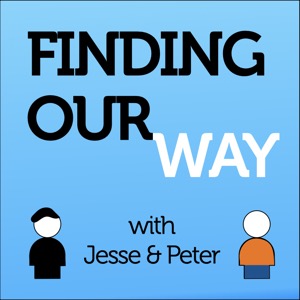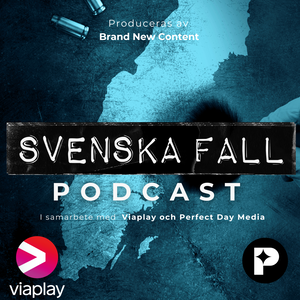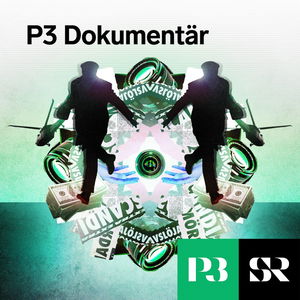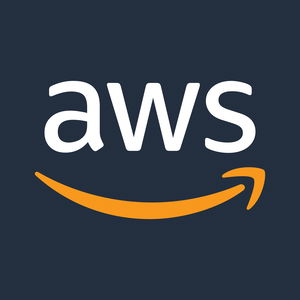


Transcript
Jesse: I’m Jesse James Garrett,
Peter: and I’m Peter Merholz.
Jesse: And we’re finding our way,
Peter: Navigating the opportunities
Jesse: and challenges
Peter: of design and design leadership,
Jesse: Welcome to the next phase. 2025 is the 100th anniversary of the Centralized Design Group at Dutch manufacturing powerhouse Philips. Current Head of Philips Design, Peter Skillman, joins us to share lessons from Philips’ century of design innovation, from light bulbs to the compact disc to healthcare technology.
We’ll also talk about the cultural factors that support design influence, what he learned and had to unlearn from his time in Silicon Valley, and how the game for design leaders has fundamentally changed in recent years.
Peter M.: Our guest today with us is Peter Skillman, a design leader who’s been working for quite a while with experience at Palm Computing, Nokia, Microsoft, Amazon, and now Philips. Thank you for joining us, Peter.
Peter S.: It is an honor to be here after, you know, connecting with you for so many years now.
Peter M.: Let’s start with what you’re up to now. What does it mean to be the global head of design for Philips?
History of Philips Design
Peter S.: Let’s start with, like, on January 5th, 1925, Louis Kalff was the very first head of design for Philips. And what’s kind of interesting is how his legacy is still a key part of, visible influence on, the identity. And he challenged Anton Philips back in 1925 by sending this letter.
This letter essentially said the advertising that Philips makes is not have the same standing and greatness in the importance of the company. In an edited way, he basically said, the advertising isn’t good enough. Hire me to come fix it. And the Philips wordmark at that point, there were 25 different versions of it.
And essentially the very first part of design at Philips, since it was a light bulb company, it all began with light, by unifying the entire visual identity. And he was around for a long time, working with some other great designers like Cassandra, who worked on the posters. And he also worked on the logo, which is stars, which represent light. And then also the waves, which represent communication. And today, data is the new light. And insights are the new communication. So it’s kind of come full circle in terms of its meaning as a health tech company, that’s looking at prediction and AI as a means of driving better care for more people.
So that was, like, the beginning. And, you know, you asked me like, what does it mean? And if I’m really transparent, you know, I’ve shown some vulnerability, you know, with my team and like, maybe like most high performance people, like it’s really scary. Like, I’ve had, I may have this facade that like, I’m on top of everything, but like, sometimes I fear I’m not worthy of this place in history.
And I, fear that I’ll mess up this huge legacy. ‘Cause I’m that eighth leader of design in Philips’ history. And Philips has probably won more awards than any design company in the history of the world, right? And so like sometimes the responsibility is pretty heavy. And I remind my team that I’m human and I’m trying to do my best to basically hold up to all of those great leaders over the past, you know, people like Stefano Marzano and Rainn Versema and Louis Kalff and Robert Bleich and, you know, Sean Carney, is like this long list of people that, really made a difference in influencing society.
Jesse: And I would think that in addition to your own standards for your performance that come from this legacy of previous leaders and previous accomplishments, there are also certain expectations that you’re feeling as well, given the history of design at Philips and the history of design’s influence at Philips.
And I wonder how those expectations, those perceptions of how design is meant to contribute at Philips, how that influences how you make decisions as a leader.
Peter S.: I think that you’re inheriting this tradition, like, let’s talk about legacy first, right, that involves maintaining consistency and functionality in the design, brand unification, and a clear focus on empathy. I mean, Philips, is, like, the first company that invented ESG, like way back in 1920s Philips was doing tuberculosis screening for all of its employees and then for all of Eindhoven and then scaled that to all of the Netherlands and at the same time set up things like corporate housing and healthcare for all employees.
Like that didn’t exist back then. And disability insurance, like these things were really new. And, so I feel like what’s unique about Philips is that. there’s all this legacy, but care and empathy form the basis of how decisions and trade offs are made as we look at the next hundred years of our future.
‘Cause we, respect our legacy, but we have to look forward, you know, we can’t look backwards. And, I think that has a part of how we communicate, with leaders and partners and our employees and new hires, that is really different than the ethos that I found in Silicon Valley.
Peter M.: So you’re talking about looking forward. I’m curious what role design has played in Philips’s evolution and shifting, right? You mentioned it started with light bulbs. It’s now a health tech company. And what you are being tasked for in terms of that ongoing evolution, what role is design playing to drive change versus, maybe, enabling change.
‘Cause so often design can be seen as, you know, when it started at Philips, yes, it was brand. It was advertising. That’s not core value.
That’s, kind of, related value. Now, it feels like design is woven into more core value realization within Philips. And, I’m interested in the mechanisms by which that happens, by which you take part in that.
Peter S.: I mean, let’s talk about the evolution. So in the early years, twenties and thirties, you know, it was all about that visually identity and presenting a consistent visual identity.
It’s funny, if you go back to Philips’s history, like, it wasn’t profitable for the first three years, like it was 18 93, And then they got a order for 50,000 light bulbs for the winter palace for the czar of Russia. Like that was the moment at which Philips became profitable. And people forget that there were hundreds of light bulb companies. Why did Philips survive and thrive for so long to become the innovation company that it is today?
And you have to go back to Gerard Philips, and Louis Kalff and many of the leaders, like today, even Roy Jacobs today, cares about the little things. No detail is small. Gerard Philips, I’ve had his notebook in my hands from 18 98. And there are extensive notes of everything that was going on in the shop floor.
So this is a place where the leaders are really into the details. I’m expected to know about everything on every project. You know, it’s an almost impossible task given the scale of the company, but, the ethos of leadership here is that you’re not a manager. You have to be a designer first or actually deeply participate in whatever your role is.
Individual contributor work may be five or 10 percent of my time, but I do get involved in individual, you know, contributions. And I think that at a lot of large leadership positions, it becomes a lot more managerial or role based and, you know, we’re really about rolling our sleeves up and caring about those details, and you lead by example.
So it started with that visual identity, where there was this history of leaders being involved in the details. And then, you know, from the 40s to the 80s, you know, is really a transition to product design. And we’re talking about consumer products, domestic appliances, and then, you know this design evolved with Knut Rahn and Robert Bleich into doing centralized design leadership, evolved to a point where there was a design and review process that became the model for many other large corporate companies at the time.
They even had this like giant round table with like a Lazy Susan in it. They would put, like, products down on top of it and evaluate every detail and decide, like, yes, we have to change this. This isn’t ready to go. This has to go back. And of course, a lot of that was industrial design focus. And so huge transition from, you know, an industrial company making light bulbs at scale, to products that it was aesthetics as it relates to self-esteem.
And then the connection from there to doing things like personal shavers and grooming, where it really had an impact on how people felt about themselves and I think that, you know, if you look at companies, it was only Sony and Braun that had that level of design orchestration that was occurring centrally at the time, where design wasn’t just a part of the organization that was like an agency producing work by order from the businesses, but this was a role that was an equal product stakeholder at the table. Which is very different than how design was treated in many early, you know, large innovation companies.
And so, then there was this big pivot, you know, we’re starting visual identity, product design, the next wave is experience design. So this is when we went from product-centric to an increasing focus on healthcare technology and user experience. And I think you know, at that point, you’re delivering value by truly understanding customer needs and working backwards from the customer, trying to understand the context they’re in, doing contextual inquiry, like the evolution of the customer, co-create happened during this evolution, as we started to move into really, you know, becoming a health tech company.
And that co-creation was, you know: step one, discover and research the context. And then step two is like framing and putting those needs in context. And then step three is ideating where you’re generating solutions and then, four, delivery.
And I think that process, doing it with customers, together, with them essentially participating in the design work, was something that was like really, really new and led to what is, I think the fourth major transition in our history, which is from visual identity to product design, to experience design, to now predictive and insight-driven experiences. And I think that’s a really significant change.
Jesse: It’s interesting also to think about what you’ve inherited from the organization and its history of design being an equal product stakeholder, as you describe it, which suggests to me that there’s a value proposition for design that’s already well understood at the executive level before you ever stepped in the door at Philips.
How Philips Succeeds
Peter S.: Yeah. I mean, this is amazing, but like a year ago, two years after I arrived, Roy, the CEO, and he had talked to me, so I knew it was coming, announced, What are the core impact drivers of Philips? Those are: innovation, because we’re a hundred and thirty year company of continuous innovation actually moving through and transitioning through major, I mean, we’re a TV company for a while, we produced, you know, vacuum cleaners and air fryers and, you know, like light bulbs. We don’t do this anymore. We don’t do consumer radios. We don’t do VCRs. We co-invented the compact disc with Sony, and we’re not in those industries anymore because we continuously evolve based on how the market dynamics change.
And if you look at the evolution of first Japan Inc, and then Korea Inc, in many of those areas, these were areas where the supply chain ownership and cost basis didn’t allow Philips to continue having a leadership position in those segments. And so the leadership really carefully looked at what are the areas where we can continue to drive value for customers. Where we could maintain often a premium position in those markets. And health tech was one of the areas where we have and continue to show innovation that competitors can’t match. We own the majority of, you know, the hospital patient monitor market as an example. And there we’re looking at things like, with this incredible amount of data, we can predict hemodynamic instability in a patient hours before a life threatening event occurs, and then recommend a protocol to take action that saves that person’s life.
That’s not something that was even possible before large language models emerged. But very quickly, we can take advantage of our position to actually deliver better care for more people. And I think, you know, going back to your original question, like, how did Philips maintain its position? Well, it came from that history of innovation, and then the other two impact drivers.
Those other two impact drivers are design and sustainability. And so we have a comms framework where we are investing in the legacy of communicating those impact drivers, innovation, design, sustainability, because that’s where we are differentiated from most of the other companies. And it helps us maintain a position as an equal product stakeholder, but note, we’re not design led.
In fact, I really don’t like the term design-led. It’s terrible because it’s so cocky to assume that everything is going to be led by design when, you know, all of the other influences, clinical, marketing, brand, you know, product, marketing, engineering, et cetera, matter so much. And so we’d like to think of a model more where it’s overlapping circles. And so I want engineering and marketing in design space doing some design work. I want the designers coding and working on product specs and PRDs and basically influencing that.
And so we play our position, but we also are often really outside of our swim lane. Which is threatening to the organi–, this is not easy. There’s conflict that comes from doing that.
Psychological Safety
Peter M.: Is that an intentional conflict? Is that a positive creative tension that you sometimes hear about in organizations? Or is this just kind of a byproduct of your leadership and prior design leadership and how you operate?
Peter S.: You know, I think if you go back to, you know, what is psychological safety, you know, and look at Amy Edmondson’s stuff, you know, on psychological safety, it doesn’t mean that everyone’s being nice. It actually means that you are openly challenging people, but in a very transparent way. You are never attacking them. You’re only challenging them and in a unique way, it’s so central to Dutch culture.
Like this is a Dutch company originally, and those value systems are part of every site, right? And this comes from John Locke and Spinoza and a culture where there wasn’t an entrenched king or elite class that drove decision making, and since a third of the country is actually under sea level. Amsterdam is like two meters under sea level. It meant that any one region or small village could basically break through a dike and wipe out a third of the country. And so power became distributed.
So what that means is this thing called poldering. A polder is actually the land that’s below a dike is a polder.
And poldering means that everyone has to become aligned, and listened to, and challenged in this really open egalitarian way. And so, you know, often it means a ridiculous amounts of alignment to get decisions done, but then everyone really marches forward. And so it’s not top down, hierarchical the way European, maybe many German companies are more top down. Many West Coast companies are top down, but the Dutch companies are not. And I think that is a unique competitive advantage because it’s also highly tied to a tolerance for other people in terms of equality, access to health care, and how people take care of its citizens, et cetera, and a freedom to express yourself without judgment.
It’s like that empathy actually becomes a competitive strength in how we care for our customers. And the transcendent purpose of better care for more people.
Philips’ Distinct Culture
Jesse: So this definitely suggests to me that you had to change some of your ways of doing things when you came into this organization, that the models from your years in Silicon Valley perhaps were not directly translatable to this new cultural context. And I wonder where you found yourself having to adapt the most in leading in this sort of decentralized fashion.
Peter S.: Great question. That is a great question. First, let’s talk about why I came here in the first place. I came here because of the transcendent purpose that what you do matters. And there are many examples where we’re saving people’s lives, every day. Like there are moments where you actually have goose bumps from the stories that you hear about that man who falls off of an exercise bike in Seattle and has a heart attack, and then he’s saved by a Philips defibrillator. And you know, they, stand back and nobody knew how to use this thing before. And it’s so clear and they rip off the pads and put them on his chest and, press the button and it describes, you know, three, two, one clear, move out of the way. And that saved his life, right.
But that’s not the end of the story. Part of the story that is unique about Philips, tied to purpose, is they scan the device. And then they got everyone who assembled that product, with him, personally, to connect to, like, what you do as it relates to patient safety and quality, saved your life.
And like, there’re moments where, like, I’m almost in tears about how deeply personal that stuff is and, that’s not manufactured, that’s like really authentic, but so okay, there’s my example of purpose.
The second reason I came is because the people, and I was lucky that Roy was actually one of the people that interviewed me, and I’ve never met a CEO like him, other than Satya, he, those two together are, are at the same level, I think, in terms of excellence and leadership and empathy and values and integrity and yeah. Like, one, I’ll tell you a story as it relates to people.
Like, one night that we were doing a a user test. And that user test, there was a video, you were dialing into somewhere in Germany, there was a clinician who had this 3D printed housing with an iPad in it, you know, with a new UX that we have been working on for hospital patient monitoring. And it was going pretty well. And I just thought, you know, I’m just going to see if Roy is interested in seeing this, you know, it’s like taking a risk to the, how often do you message the CEO?
But I just thought it was really interesting that he understands what… how things are built and process and made at Philips. And so I sent him a message on the internal Teams channel and he replied in like five milliseconds and he was waiting for a plane, you know, he’s at the airport and he dialed into the meeting and then the other designers in the call, it was like an 8:30 at night, really weird, you know, testing with, you know, there’s Roy Jacobs, you know, pops up on the header and they’re like, what, you know, like the CEO is like watching it and he never turned on his camera and he didn’t say anything, but he just listened, right.
And so like the fact that you have a leader that’s willing to dive down into that level of Gemba, it’s one of the reasons why I’m proud to be here. Okay.
So, purpose, people. And the last reason is that there is so much work to do here. And I felt like I could really drive impact. We have a lot of work to become a first class software company, because we’re an innovation company that now is maybe almost two-thirds software.
Building Better Software
Peter S.: We are world class at the hardware. We have a lot of work to do and the reason why Roy and others wanted to recruit me here is because of a digital acumen, you know, around things like DORA metrics and software quality and UX telemetry and design language adoption and how we deliver platforms and really up our game digitally.
And, what struck me is how little resistance I get to driving those changes. The other thing is that… let’s take the best things that I’ve learned from Amazon. Amazon is the highest execution acumen I’ve ever seen in my career. It was two very difficult years that I had. It is not easy. There are moments where you’re grinding your teeth, right?
And the psychological safety at Philips is vastly higher. But I will say that, like, if you want to see excellence in execution, AWS is a great place to look at. Amazing depth of mechanisms. And so some of those mechanisms, so, you know, captured in my head, you know, preserved all their intellectual property, of course, I haven’t challenged that.
But those things that in terms of thinking about how you drive excellence in interviewing, or even writing. I started a Powerful Writing at Philips class to up the level of our communication.
And so like you asked me, how did I change? And what is so amazing is I didn’t really have to change. The culture’s so welcoming of that challenge of raising the game. It’s the least conceited culture I’ve ever been part of, in terms of people are not threatened by ideas. You know you will be asked and challenged and like people will argue with you, but, it’s not political or personal nature ever. And so that makes it, you know really easy.
And then the other thing that I think has helped, because, you know, it’s always hard when you’re trying to bring about evolution or change in a particular area, is that we built a design agenda and the design agenda is a response to the business strategy as a compass for everything that we do and it’s composed of four themes: care, unite, simplify and elevate.
And each of those four themes, Care, Unite, Simplify, Elevate, have a set of guiding principles that each design leader thinks about. And it’s how we evaluate the trade offs that we’re making so that we maintain the excellence that Philips has delivered for the next 100 years. And I think that being able to communicate and tell those stories has been a really powerful and important part of how we’ve driven, you know, those kinds of changes and…
But I would say that the one place where I have changed substantially is maybe less related to coming here, but part of my own lessons, is that I’m not focused at all on my own position anymore. I’m more focused on unlocking the creative potential of other people. And I don’t care about my ego. I don’t care about comp, you know, like, I realized in, maybe too late, maybe 10 years ago, but I started to, but like, it’s really true today that my ego is not wrapped up around the role and I’m really having so much fun recognizing that the more that I give back to others, the better the outcome is.
Peter M.: I want to go back to the design agenda. Agenda is something that, Jesse and I talk a fair bit about, and you mentioned these four principles. I’m curious though, what is the Peter Skillman agenda, right? You have been granted…
Peter S.: yeah.
Peter M.: …a role, an authority, a leadership position, and with that typically comes some idea of where you would like to take things, right? You’re not there simply to mind the store. You’re there to realize some evolution or change likely. What is that?
Peter S.: I have four priorities right now and it comes from how can we deliver the best industry leading experiences to deliver better care for more people. And it’s always grounded in that transcendent purpose, right?
And so if I look at what are the threats to the next 100 years right now, it’s around software quality, UX telemetry services, experiences, and design language adoption. Like, how do we ensure that every single component is code backed with design tokens so that we increase agility by 50 times. And, you know, that effort at Amazon took four and a half years. At Microsoft, it took seven and a half years to drive full adoption of things like, you know it’s called Polaris at AWS, it’s called Fluent at Microsoft.
And there’s a lot of infighting about that adoption. But then some folks at Microsoft, with Satya’s support, delivered on One ES, or one engineering system. What happened when they executed on that, is that they were able to deliver Copilot in like three months, across all of Office.
That level of agility was never part of the Microsoft platform level software that was completely disunified. You know, look at Outlook. I was the head of Outlook when I was at Microsoft. And If you look at Win32 and Mac and OWA and mobile, though all those code bases were completely disunified, every single button had a separate instance of code. And so it meant that when you want high agility, you couldn’t deliver on that.
And it took them seven and a half years. But then what I saw was the insane amount of agility that you get. Now, one thing I love is that, you know, Satya and Roy, they talk every quarter, right? So they’re talking about this stuff that like Roy knows what DORA metrics are, you know, for developer productivity, you know, like, how cool is that, you know?
So my agenda is about ensuring that we have the foundation to build an amazing future, right? Like, I’ve become a software evangelist and that’s where I’m honestly quite often out of my swim lane. And that gets to like how design leaders of the future– and you can ask me later about the design freak out, I have some super opinionated thoughts on that one– but like, I think that all of these things represent how I have to ensure that we have the conditions for success.
Peter M.: When you say “out of your swim lane,” do you mean you’re now swimming in engineering waters? ‘Cause software seems to be your swim lane.
Peter S.: If you look back historically, you might think that my swim lane would be industrial design. Industrial design is amazingly, like, superb. Color materials and finish thinking and, you know, we had a thousand colors. We went down to 100, and that saves incredible amounts of money and improves sustainability, like all of our systems and mechanisms around, you know, production and evaluations of first shots.
And I mean, you know, I was forged in the cauldron of collecting first shots out of multi-cavity injection molding tools in Asia and Taiwan and Mexico and, absolutely getting into details about different aluminum grades, you know, and, how they anodize…
Peter M.: over chamfers…
Peter S.: You’re right, that was part of my DNA. And I don’t have to weigh in on C2 surfaces here, and ellipses rather than radii on, you know, surface continuity. Like, everybody knows how to do that here. Like, they’re really good. But on the software side, I really have to work on providing industry backed examples of how we achieve that level of agility that you see at AWS and Amazon and the big magnificent seven, right?
Because, those other companies are really truly world class at that.
Managing At Scale
Jesse: I wonder about how you manage all of this at the scale that you’re operating, and especially as you have a leadership that expects you to be conversant with detail. Sometimes you are right there in the weeds as an individual contributor. Sometimes you have to maintain kind of a higher altitude and I wonder how you set those priorities for yourself and how you choose where you lean in and how you lean in.
Peter S.: This is where again, being reforged in the cauldron of AWS, I learned some really excellent mechanisms about how to communicate. We have a QBR quarterly, like we review every single project in a condensed form and a document and all the design extended leaderships review have visibility into what’s happening across 18 different businesses, right?
So that kind of clarity allows us to help maintain things like simplify, unify, elevate and care, like, the design agenda then becomes part of that. Like, Oh, you’re working in a very similar kind of use case. Let’s share Figma files and make sure that, you know, we’re, leveraging the same module or that we’re delivering a unified experience.
Because what you want is you want every experience at Philips to be unified. I mean, obviously the consumer side, a little bit different in personal health, but you want to ensure that you have communication to ensure that that excellence happens. So that’s one mechanism and we do that both at the central team level and all also at the business team level.
And then we have guilds. So we have nine guilds. Data and AI and we have product and spatial and we have design thinking and we have operations and tools and we have digital and all of those, sustainability, all those guilds meet to raise the bar on that particular specialty so that anyone in the company, regardless of whether they’re in design or not, can invest in ensuring exactly what is the top, most relevant, most meaningful thing happening in the industry and they learn and share so that we continue to raise the bar. That’s elevate.
Then we have obviously all hands. Then we have some really amazing mechanisms around the career ladder. We communicate to people, here’s how you get presented. We have a set of six lenses that we use to evaluate promotion. We do promo docs.
I learned this from Amazon. Amazon has the best mechanisms for evaluating talent of any company that I ever experienced. And so I can leverage things that I learned there, and recreated from memory with, and then optimize them and change them, so that they’re relevant in the Philips context, because the Philips cultural context is very, very different. So it’s unique. It’s not Amazon’s thing, but it’s what the things I learned about those mechanisms for delivery for communication.
Also, for writing strat facts, strategic narratives, PR, FAQs. That’s actually been adopted. Because working backwards from the customer through a structured document of high information density with like an open commenting culture in the document. So if you’re not in the meeting, if you missed it for some reason, you go back and read it. It’s far more inclusive. So this is also really good for, inclusion and diversity and ensuring that people that are neurologically diverse or introverted become part of it.
Peter M.: You, mentioned the guilds and that made me realize that we hadn’t kind of level set just in terms of, like, what design means at Philips, like, where are you situated? Who is your boss? What are your areas of, what are your functional areas, right? If we think of design as an organizational function, it sounds like industrial design, software design, maybe design thinking, like give us some, clarity in terms of your organizational situation and kind of size and scale, just so we have a…
Peter S.: sure.
Peter M.: baseline to work.
Peter S.: When I assumed Sean Carney’s role, I had you know, over 600 and we went through a pretty substantial reorganization under Roy’s leadership and there, it was really important at that time that we go from a horizontal organization to a verticalized organization.
This has happened many times throughout our history. And the design leadership, regardless of whether you’re vertical or horizontalized, so, what’s really interesting is that unifying leader, regardless of whether they report to you or not, has always been present.
And I was part of a group, along with my boss, who is the head of innovation and strategy. So I’m one layer away from the CEO, right? I’m an L3, level three. and honestly, nobody, no design leader, should report to the CEO. It is way better being one layer away. It means that you have an escalation path. It means that you’re not pulled into a lot of discussions that are not relevant to ensuring you raise the bar.
The best place to be as a design leader in any organization is L3.
Peter M.: Just so we’re clear. L1 is the CEO. L2 is your boss and you are L3.
Peter S.: That’s correct. Right. Exactly. So I had all 600 in 12 different studios, 35 different nationalities all over the world, you know, it’s Blumenau, Bangalore, Shanghai, Haifa– experiencing a rather intense, obviously, tough place to be in that studio, so we are highly empathetic with what’s happening there. Then we have Eindhoven and Amsterdam, which is kind of treated like one studio, and Bothell and Cambridge, Massachusetts. So it’s a distributed team worldwide.
And so, for example, we have other mechanisms. When we do all hands, we have to do two, one in the morning and one in the afternoon. We always have two, so that we are mindful of double time zones. And then we have you know, quarterly all hands and we share information and then there’s, like, newsletters and there’s all kinds of these mechanisms.
Shifting from Horizontal to Vertical
Peter S.: So we went from horizontal, right, and what happened is we got really, really big, and there was a lot of research that design was doing unilaterally that the business didn’t necessarily want done. And so by verticalizing… so design evolved a little bit as an agency during that period. And so by embedding design back into the business, it absolutely doubled down on trust, and that alignment, like now that we’re verticalized and I don’t have, you know, I have a third of the reports or, you know, a little less than a third of all the reports.
I have more influence now than I did before because of the trust that has resulted from that restructuring. And honestly, there is no one best structure. You actually need to move from one to the other based on what is happening on the ground and what the organization needs at that given time. I used to be quite opinionated about this, but then I learned that you actually want, you want both.
The Big Design Freak Out
Jesse: So let’s talk about the freak out. You brought it up.
Peter S.: Yeah.
Jesse: What’s going on out there, Peter?
Peter S.: So, I think that, first of all, at Philips, design is an equal stakeholder. We sit at the table and there is no design freak out at Philips. And for listeners, the design freak out, there was this Fast Company article that came out, and several others, that essentially said that design has lost influence and power and provided a bunch of examples.
And I think that those examples might’ve been true. You know, my thesis is that that article about the destruction of the creative class got it wrong. It isn’t the erosion of leaders. It’s that the existing leaders, in that cohort failed to recognize that the game had changed. And I can give you some examples.
You know, like actually what’s amazing is you have a new series of significant growth in amazing female leaders like Daniela Jorge, we talked about Kat Holmes. Amy Godee, you know, is an example at Publicis and Sapient, you know, she’s a designer that, has a huge organization, right. And these are the designers that are thriving, and they’re the ones that are actually jumping out of their swim lane.
And I think that there was a cohort of design leaders that got a little bit less humble about their position, and you could apply that they’ve lost a sense of their humility. You know, I think there are exceptions in the noose and the knives and the sort of Damien Hirst level of boutique influence that, but that stuff, you know, that doesn’t scale though.
But when we’re talking about mainstream business, I think what’s changed is that bias to action and ownership for execution with a willingness to jump out of your swim lane, and absolutely be addicted to the learning associated with every single detail of how the business operates.
There are great examples of, if you look at the fashion, Yves Saint Laurent and Anna Wintour and Coco Chanel and, Miuccia Prada, like all these people. Alexander McQueen. They’re in control for long periods of time. But now there’s a lot of turnover in fashion. You know, Virginie Viard just left Chanel. So if you look, the optics might suggest that there’s, you know, that’s happening in a lot of places.
But I think that what happened is that the job requirements for CDO or for a leader of design really changed, because, it’s, everything is focused on execution. And I’m a judge for the IF UX design awards. And so this weekend I spent like 22 hours judging 375 UX entries. It’s insane. And I will tell you, it’s fascinating because it’s a window into what’s happening in UX in the next two years. And I will tell you that the Chinese and Korean, like, the amount of innovation that is happening there is crazy.
There is a huge amount of entries that focus on the fact that, you know, ChatGPT blew design thinking and, you know, people are adding all these irrelevant AI things to the products. But I think that there’s a hunger and a competitiveness that is really starting to influence the work of others.
And I think that basically some of us got complacent and we need to double down on the unavoidable truth in this world, is that there is no substitute for putting in that intense hard work and really focusing on doing whatever you need to do to drive the business.
It’s interesting that you call out innovation in this because it seems to me that, for a lot of design leaders, innovation is the piece of the value proposition for design that gets lost with this focus toward execution.
And so I wonder about how can design leaders keep the spirit of innovation alive in an environment where there’s so much focus on delivery. There was a period for Philips when there was a vast amount of money and time invested in doing long range vision projects. And I think that I’ve arrived at a different time in our business need. And, like, there is an incredible amount of innovation happening, but it’s focused on where we can drive unique value for better care for more people and, not like, okay, let’s envision, you know, the future of kitchens and, you know, 50 years and, spend, you know, a lot of money on, you know, custom copper, you know.
Like those investigations, I think we’re part of that era and I’m not critical, in fact, you know, some of it is kind of lovingly, you know, produced work that gave people, you know, maybe a sense of their context and culture and how I should think about, you know, some esoteric thing that they’re working on, but, like, the world has changed.
It is so radically competitive. It’s still innovation. It’s just not open ended exploration, right? I think that you’re just naive if you’re going to assume that that’s what leadership is like in today’s context.
Every company, even look at Google, like Gen AI could potentially threaten the very existence of Google search as the dominant part of their revenue stream. I don’t know that to be true, but, that is certainly being discussed and so, like, constantly innovating means, like Philips has done for 130 years, that we’re gonna continue to evolve and find the place where we will deliver meaningful value to our… really to the customers that we care about. That’s where the heart, our heart is.
Design Evolving
Peter M.: You’re speaking the heart. I find myself wondering, as the game is changing, as you’ve explained it, right, a focus on execution, a focus on kind of nearer term relevance, and the need for designers to be more business conscious, you mentioned the complacency, right? Where it felt like these design leaders had kind of drifted away from a certain reality, a feet on the ground reality. I find myself wondering, what then is the heart of design?
Design starts bleeding in to these adjacent functions as it gets more business savvy. And I’m wondering where you see that center of design being, is it empathy? Is it craft? Is it creativity? It… like, how do you talk about it? ‘Cause design can be, I mean, you mentioned a design thinking practice, right? Design thinking is about letting everyone else embrace design. Design can have a squishiness. And so I’m wondering what you do to kind of reify it so that there’s at least some center that holds when you talk about design at Philips.
Peter S.: Well, let’s talk about what leadership is first. For me, leadership is creating clarity, delivering results, and then the third and most underappreciated part of this is, generating energy and enthusiasm. So like, what we do is to unlock the imagination and potential of everyone in the business.
And I don’t think that having those constraints, that we’re focused in a given area and making sure that we’re also driving the execution means that you’re not doing exploration. We have this amazing research group you know, that’s about Hermione, my peer, and who is the next great leader of research.
You know, Philips has a set of tools and business mechanisms to invest in new things. Basically it’s almost like Y Combinator, you know, like a startup farm, you know, to invest in those. And so there are a bunch of ways that you can do that, but they’re not unilateral decisions by somebody that wants to just try something out. There’s a structure and governance for evaluating those ideas, and ensuring that they either receive or, if they don’t hit their milestones, and they don’t get money moving forward.
And it’s no different at Amazon. I mean, you would say that is also an innovation company. They have a part PRFAQ process and they allow for multiple products to be launched at the same time. I mean, at one time there were probably five different products that were doing anomaly detection and AIML, and they just wait and see which ones win and they keep them. Super frugal investment. I think that that’s, like, a great way to think about how you invest overall in your portfolio.
Abby Godee, this incredible design leader at Sapient Publicis, and she’s also involved in, you know, organizational transformation, right? So, like it is design almost applied to HR, right?
And so I think that, that’s, what’s different today to be effective as a design leader, what makes it really hard, is you have to master a radical number of things if you’re going to manage at this scale. Because you have to have fluency, and it’s not a narrow area of UX or industrial design or experience or even co-creation, etc. But it’s also like how you look at HR and how you look at like, you know, business and organizational structure.
And it does mean that at this scale, that the personal commitment is pretty high, right? It’s not an easy job. You know there’s absolutely no substitute for doing the hard work. You never think small. Luck favors the prepared mind. You have to sell, sell, sell. Your ideas are your marketplace. You have to reframe failure. You have to break the rules. You have to shut your mouth and listen and learn and focus on others and not yourself. And doing all that simultaneously is really hard. And I’m still learning.
And I just fear, like I, let’s go back to the beginning of this conversation. Like, I’m always afraid that I’m not going to be good enough. This is so big historically. Like, I refuse to be the person that let design down, our hundred years of legacy.
Jesse: Peter, what do you think other design leaders should be paying closer attention to here as design enters this next phase?
Peter S.: I think that there’s one unavoidable truth. There’s no substitute for putting in the work. That means a bias to action and ownership for execution. Execute, execute, execute. There are tons of expensive vision projects that don’t belong in a modern company. And if I look to Asia, the pace of that execution is insane. It’s just moving faster, right? So, we cannot get complacent, right? and I think that next leaders have to become vastly more focused outside of their domain swim lanes, HR, PM, dev. I think that everyone has to become fluent in AI, because it’s just fundamentally changed how we do work.
AI
Peter S.: I mean, for us, there’s three big things with AI. It’s amazing, we haven’t talked about AI yet. Isn’t that great? Let’s celebrate.
The three things are the design tools have radically changed. You know, we’ve got AI and Morone, we’ve got our own internal enterprise version of, you know, C hat 4.0 and GPT.
And we have Amazon Bedrock, and we have multiple models and we can produce an amazing persona that’s better than any of my career in like 30 seconds. I can just type in a new name, electric cardiologist, and it pops out the entire persona with a picture and pain points and everything. It’s like, it’s insane how much faster it’s made certain kinds of work happen.
But it does not threaten our jobs at all. It does not. You just have to be able to use them or else you will get hurt. Spun out by others that do.
The second thing that’s changed is insights and prediction. It allows us to deliver insights and deliver products with those insights. It’s called clinical intelligence. It’s like the idea of using data to make predictions, and that becomes a game changer in healthcare.
The third thing that’s changed is that it’s radically personalized. First, at the cohort basis, you know, we would hope that we have data that’s based on female or male and, and that we leverage that personalized care to become even more detailed. If it gets all the way to your DNA, we’ll need to make sure that we’ll have pretty good security so that maintains your degree of privacy.
But in the beginning, it should at least be cohort based. And then mechanisms for ensuring safety such as bump stops and human in the loop to know that you have, you know I think I’ve already agreed to some summary, or I’ve read it, and, yes I agree with that AI prediction or action that’s being taken.
The second of course is that you have visibility that something is AI generated. And it could be through a blue ring, or it could be through an animated icon, so that you know whatever’s being served to you, it’s clear, it’s transparent, and that there’s also traceability for the people. But, okay, so there’s those tools. It’s personalization, and insights, and it’s radically different tooling for us.
But then I think that the role of design is also to focus on the beautiful essentials, simplicity and speed, bridging the gap, it’s still, you know, an everyday fight to ensure that we focus on doing less better.
What you remove is more important than what you put in. You should invest in building agility before you invest in new features. The unconventional wisdom is that if you address customers’ frustrations, rather than adding new features, often fixing and making better what you’re selling in the truck today, that’s far better then adding a bunch of new stuff.
It’s just optimizing workflows in healthcare. There’s a crisis for our clinicians that spend 40 percent of their time entering data. And they’re getting farther and farther away from what brought them to the field in the first place, which is caring for people, right? And so that burnout is leading to a threat to the quality of care, and it’s also to the cost of care. And, the thing we need to focus on, the main task for Philips, right, for this, it’s workflow, and simplifying their lives, minimizing the number of clicks so that they’re more efficient.
And when you apply AI, most of the… 95 percent of our value is just in treating the mundane, beautiful essentials. It’s not doing some extra high acuity AI task with a very expensive, complicated model. A lot of it is just, like, improving search. And so I think it’s really important to stay focused on the basics. It’s really easy to forget that. That’s the core of what design does.
Peter M.: You’ve been at this for over 30 years, as Jesse and I have. You talk about the amount of work and effort it takes, even for you now, today, to maintain a level of your performance that you would consider acceptable. And when I hear that, I get exhausted. And so I’m wondering, what is driving you? Like what, what’s motivating you? Why are you still willing to, I’m sure, put in the long hours and get on planes and you know, whatever it takes in order to do this, what’s driving you?
Peter S.: Let me ask you this. What motivates ambitious and creative people? Both Peter and Jesse. Tell me.
Jesse: Growth, purpose,
Peter S.: Okay.
Jesse: Making things real.
Peter S.: Awesome. I’ve been asking this question in interviews for 30 years. So I’m really interested in how people respond. Peter.
Peter M.: I mean, when Jesse said purpose, your own sense of purpose, whatever, what, you know, we each have a thing that drives us that gives us meaning. And so that’s what… usually that. And so I’m curious if, is that it for you? And if it is, what is, that purpose for you?
Peter S.: For me, I am on this earth to unlock the creative potential of other people. I figured out about 15, 16 years ago that that is the funnest thing for me. And when I’m done with Philips at some point in the future, I’m going to go teach part time. I love to teach. It’s really fun. And I mean that, that’s how I derive energy. That’s my purpose.
The second thing is, Jesse, what you said so beautifully is growth, mastery. Like I am addicted to learning. And this place is an amazing place to learn. So that makes it really fun. And the work-life balance is still a lot better. I do not wake up at three in the morning, grinding my teeth. And I also have people that are so empathetic, you know, my weakness is that sometimes I can overwhelm people with my passion, and so I sometimes need to meter it back a little bit.
And the second thing I have is that if I feel like I’m being undermined, I can become a little fragile, and then become less self aware. And so in cultures where I felt undermined, I’ve been less self aware and sometimes that’s run into problems. But, Philips is like, it’s really loving. And so it just makes it easy, like, because it’s fun. It’s just like relaxed.
So anyway, we get to purpose and mastery. And then the third is self-direction, right? Autonomy. This is now, I’m referring to, you know, Steve Pink, you know, RSA.org. The autonomy is the other highly motivated thing is… I am not micromanaged at all by my boss. My boss is like completely like, you got it. Go drive it, right? Here are the constraints. And that makes it really fun cause I have a leadership team that is like welcoming of these changes. And so, you know, all those things like combined together, like that’s what’s driving me.
Jesse: Peter, thanks so much for being with us.
Peter S.: It was just an honor.
Peter M.: This has been fantastic.
Peter S.: Thank you so much. It was really fun.
Jesse: For more Finding Our Way, visit findingourway. design for past episodes and transcripts. You can now follow Finding Our Way on LinkedIn as well. For more about your hosts, visit our websites, petermerholtz. com and jessejamesgarrett. com. Peter recently launched the Merholz Agenda, his semi weekly newsletter.
Find it at buttondown.com slash petermerholz And if you’re curious about working with me as your coach, book your free introductory session at JesseJamesGarrett. com slash free coaching. If you’ve found value in something you’ve heard here today, we hope you’ll pass this episode along to someone Else who can use it. Thanks for everything you do for others, and thanks so much for listening.

















